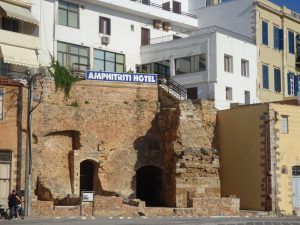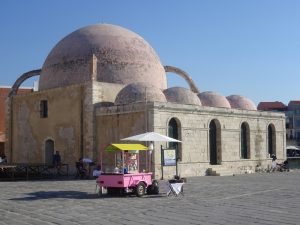Famous historically for the Minoan Civilisation that was destroyed when the Volcano at Santorini erupted in the middle of the Second Millennium BCE, Crete today has a thriving economy and is the second largest island in Greece. United with Hellas-Greece early in the Twentieth Century after the fall of the Ottoman Empire, it would be interesting to speculate as to what may have happened if Crete had stood alone.
By 2017, Hector has made three visits to the island, residing on the more populated north coast each time. Crossing the island in 1988 for the first time, Hector could not help but observe the evidence of glaciation haven taken place here. Despite attempts at finding academic articles on this subject and also consulting with native speakers, the proof has never been found in print. Looking at the edge of the mountains from Platanias, the evidence was there – Pyramidal Peaks. With snow lying on these peaks until June, then surely ten thousand years ago, things were much colder here, enough for glaciers to form?
Despite the size of Crete, there are no trains. The National Bus Company – KTEL – run a regular and reliable service between major centres. It is better to be early than punctual if one is waiting between the start and end destination, Buses do get ahead of schedule, they can also be late. Tickets for longer journeys can be purchased in advance, else the norm is to pay the conductor, not the driver.
The towns and cities visited:
Rethymno
Malia
Agios Nikolaus
The Historical Sites
Spinalonga (Leper Colony)
Natural Sites
Samaria Gorge
Preveli Beach


